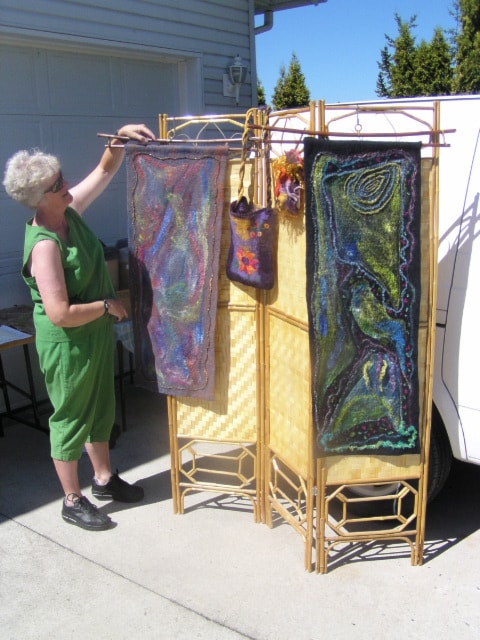A short distance up Oyama Lake Road live some of Lake Country’s most exotic residents.
A few minutes drive up the gravel road is the home of Darlene Homenchuk and Jim Covington, who share the stunning views of Wood and Kalamalka Lakes with their 17 “boys and girls.”
Their kids might look a little different than the sort one might find at the local elementary school. But the herd of alpacas are family to Homenchuk and Covington all the same.
Each animal has its own name. Spending time with the individuals to get to know them reveals unique personality traits said Homenchuk.
Recently, Oyama Lake Alpaca Farm held an open house to show the public what goes on at the farm.
Homenchuk is the resident fibre artist, who uses the clippings of fibre from the annual shearing in mid-April to produce an ever-expanding line of products.
Some of the popular items for sale at the farm include alpaca socks, scarves, shawls, ponchos, hats, felt soaps, blankets, as well as a good selection of yarn and rovings for the spinners and weavers.
A number of different processes are used to create these items such as carding, spinning, weaving, felting, knitting, and custom dyeing. Homenchuk does all of them on site at the farm.
She has won numerous awards and ribbons for her original designs of wearable art.
One of the techniques that was demonstrated at the open house was known as wet felting.
Homenchuk starts off with a large piece of carded alpaca fibre called a batt.
The batt is used as a base layer onto which shapes cut from additional designs of pre-felt are laid.
Batts can be hand dyed in a variety of colours and are chosen to suit the artistic vision for the finished product.
After the batting has been laid out, soapy water is carefully applied to the entire surface of the project and then pressure is applied on the batting.
Then agitation follows, which causes the fibres in the batting to “interlock” together to produce the felt which is then allowed to dry on a flat surface.
Homenchuk uses this process to create items such as wall hangings, table runners, blankets, and felt yardage for vests and felt mittens.
So where does the batting come from?
Well, Homenchuk makes that too.
After the alpacas have been shorn of their winter coats the fibre is washed, air dried, and then fed into the drum carder which straightens the individual fibres and results in a soft, fluffy batt.
Batts can also be used for quilting and making pillows.
Homenchuk is enthusiastic when it comes to sharing her art form with new people.
When she manages to find some time in her busy schedule, she likes to teach others how to be creative with natural fibres.
Anyone interested in taking a class with Homenchuk should contact her directly by visiting her website at www.alpacadelights.com. There, they can have to have their names added to a waiting list of people interested in one of her classes.
